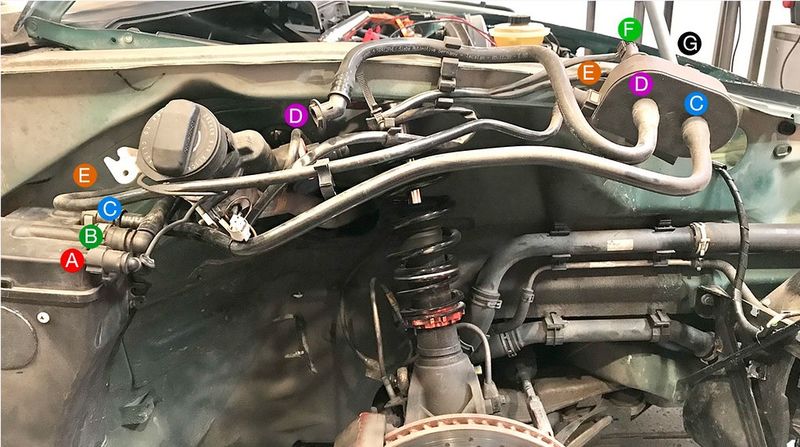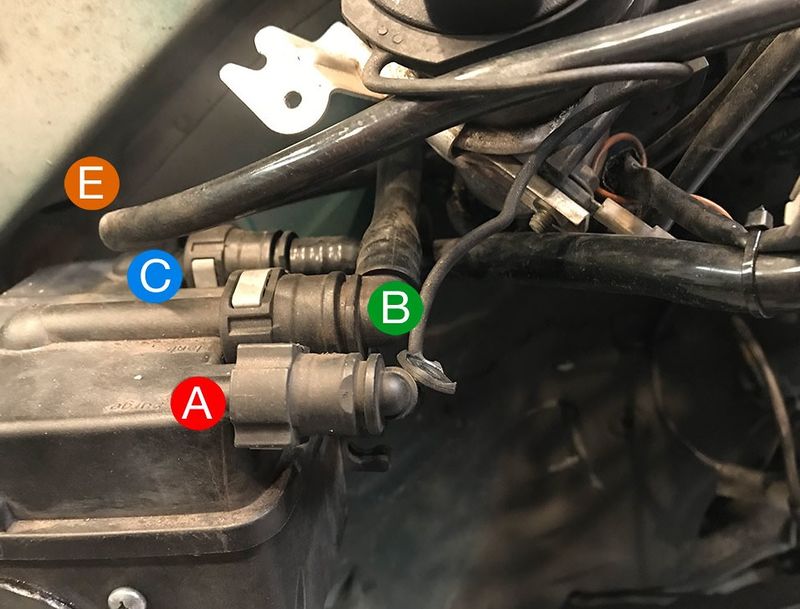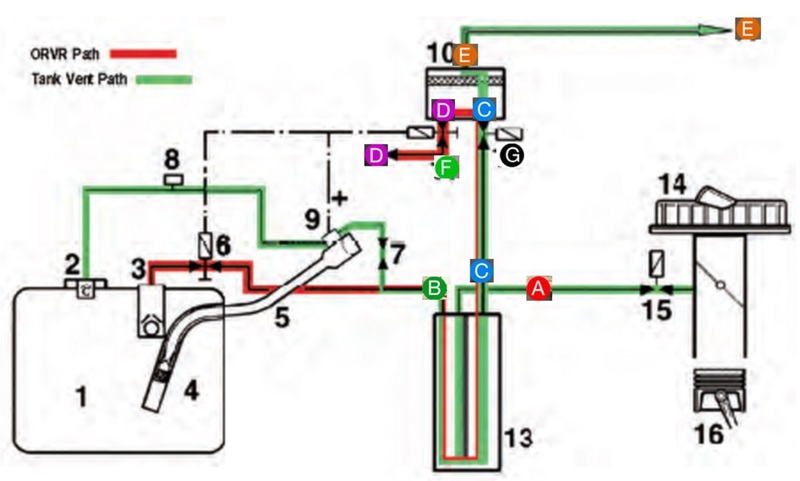Earlier this year my 2002 2.7L Boxster developed the howling noise from the fuel filler area. It went from being very intermittent to almost constantly present at idle. I’ve scoured the various Porsche forums trying to understand not only the fix, but what the cause is. I want to share some of the things I learned and see if others can help fill in the gaps I haven’t quite figured out.
The following information is for Boxsters and 996s with Onboard Refueling Vapor Recovery (ORVR) which is option code M664. The fuel evaporative systems on cars without ORVR is similar, but the there are differences in the installed hardware and system function. See this link for a quick primer on ORVR.
https://en.wikipedia.org/wiki/Onboard_refueling_vapor_recovery
The Boxster/996 fuel evaporative system operates in a few different modes. The system captures vapors during fueling (ORVR), it captures fuel vapors when not fueling, it has a tank/system leak check function and the captured fuel vapors are sucked into the intake when the engine is running to clear out the vapors from charcoal canister.
The noise is common to part of the ORVR system. The following page from the After Sales Training document – P25 Advanced Fuel & Ignition Diagnosis documents how the ORVR system behaves. The schematic really helps understand how the vapors get from the tank to the canister and the intake.

Before we get too deep into the details I want to add some excellent pictures I found in the following post from JSG1901. I find it much easier to understand the system with them.
Removing EVAP components and charcoal canister...?




The noise emanates from “D”, a vent hole in the tray in the fuel filler area. The vent hole “D” can be seen with the fuel filler door open at the forward end of the tray. The hose from vent “D” leads to the valve assembly in the R/H wheel well behind the liner. This valve assembly contains the 996.605.213.01 Fuel Tank Vapor Control Valve “F” for ORVR use and the 996.605.201.01 Shut Off Valve “G” which is used during the fuel tank leak test. The hose “C” connects the valve assembly to the canister and hose “E” is an open ended vent as far as I can tell. I believe it runs to the rear of the car, but I have found very little reference to where this goes. However hose “E” becomes important to us as we move forward.
When the noise is present the engine is running and the evaporative system valve on the air intake is open. This intake valve goes by many names regeneration valve, tank venting valve, but its part number is 996.110.129.06. When the intake valve is open the engine pulls a vacuum on the canister through hose “A”. As hose “A” pulls a vacuum the canister needs a source of fresh air so the vapors can be sucked out. This source of fresh air is through hose “C” to the valve assembly and then hose “E” out of the valve assembly.
The noise is caused when the vacuum is great enough in the valve assembly that it pulls open the normally closed 996.605.213.01 Fuel Tank Vapor Control Valve “F” and pulls air through the vent hole “D”. Why does the valve get cracked open? It is either caused by a weak spring on valve “F” not keeping it shut, a blockage in the vent hose “E” causing higher vacuum or a combination of them both. When troubleshooting on my car I could make the noise stop by disconnecting “E” from the valve assembly, opening valve “F” by triggering the reed switch in the filler neck with my finger or plugging the vent hole at “D”.
An additional wrinkle is that my car also developed code P0446 after the noise started. My Durametric had a fault code for the shut off valve “G” associated with the code P0446. Based on the P0446 code and the noise I think my vent line “E” was partially plugged. The lack of fresh air during clearing of the canister caused the code and the increase in vacuum to crack open valve “F”.
I blew out hose “E” with compressed air, but since I don’t know where hose “E” goes I couldn’t verify the blockage and if any blew out of it. I hooked it back up and the noise stopped, so I think it did something positive. I also changed valve “F” 996.605.213.01 and valve “G” 996.605.201.01 with used ones I bought while I was in there (I’m tired of taking the liner out…).
My recommendation would be to start with hose “E” if you have a problem. Other cheap solutions would be to disconnect “E” from the valve assembly and add a short hose or just plug the vent valve at “D” while driving and remove for fueling.